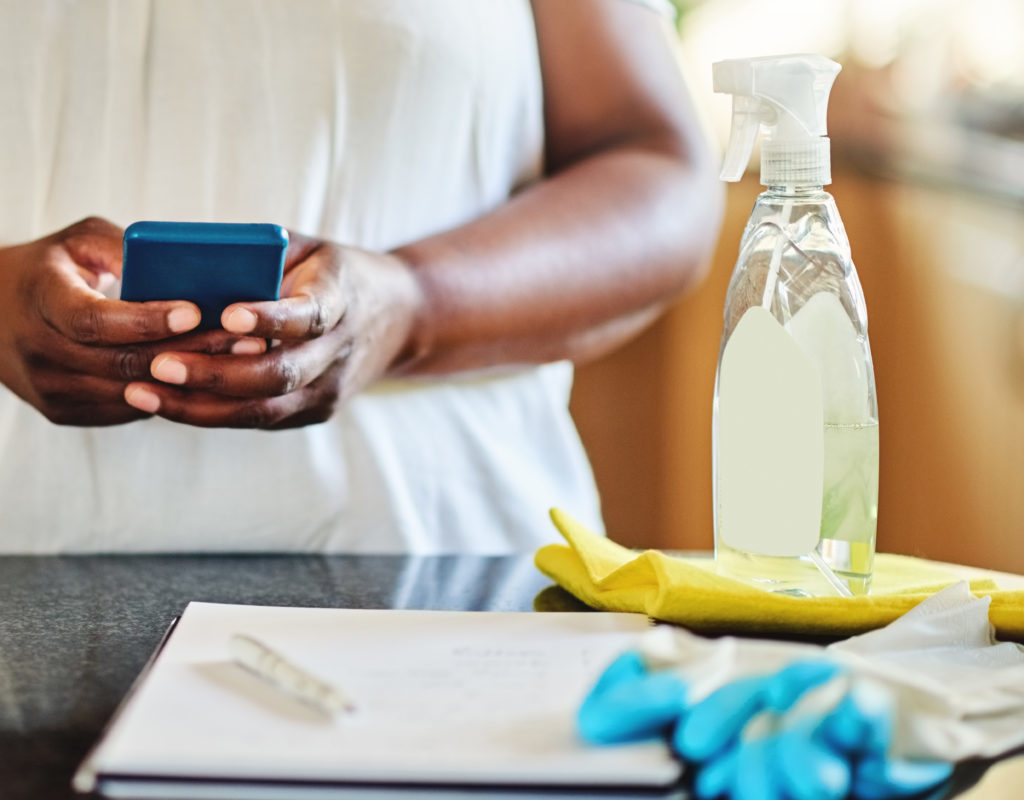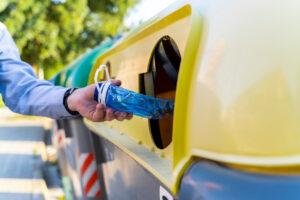
Memo
Choice and Safety Are Not Mutually Exclusive
MEMORANDUM
To: Interested Parties
From: Consumer Brands Association
Re: Choice and Safety Are Not Mutually Exclusive
Date: April 7, 2025
Read the Full Memo
As the Make America Healthy Again (MAHA) movement gains momentum, the consumer packaged goods (CPG) industry continues to lead in innovations that meet consumers where they are. The makers of your favorite food, beverage, home and personal care brands provide these products without ever compromising on safety, value or convenience. They have always upheld this commitment and they always will.
How do they achieve this? By prioritizing agility, investing in technology and leveraging peer-reviewed and credible scientific research to drive innovation. Additionally, the CPG industry supports over 22 million good-paying American jobs, making it the largest domestic manufacturer by workforce.
Consider This: Innovation Timeline
In the 1950s, a cultural shift occurred as more women entered the workforce while still at the same time managing cooking and household responsibilities. To address this, the food industry introduced more convenient items that allowed women to work while ensuring their families still could enjoy a wholesome meal. During this time, advancements were also made in refrigeration and frozen storage, which helped ensure these foods could be stored safely without compromising quality.

Additionally, as public health awareness grew in the mid-20th century, consumers began seeking toothpaste that not only cleaned teeth but also actively prevented decay and enhanced their smiles. In 1955, fluoride was added to toothpaste after research confirmed its ability to strengthen enamel and prevent cavities. This innovation was driven by increasing concerns over tooth decay, particularly in children.
In the 1960s, when parents sought more convenience in managing household responsibilities, there was a growing demand for easier childcare solutions. Traditional cloth diapers required frequent washing, which was time-consuming and impractical for busy families, particularly as more women continued to enter the workforce. As a result, disposable diapers were introduced in 1961, revolutionizing infant care by providing a hygienic and time-saving alternative to cloth diapers. This innovation allowed parents to spend less time on laundry and more time with their families, aligning with the cultural shift toward modern, efficiency-driven parenting.
In the 1970s, growing concerns about saturated fat led non-governmental organizations (NGOs) to recommend unsaturated fat sources. As a result, the production of margarine surged as an alternative to butter. At the same time, consumers were seeking more convenient options of food and ways to cook and store food. The CPG industry responded by offering more frozen meal options and introducing products like crockpots and plastic bags for wrapping. This allowed busy moms to prepare meals in advance or have quick meals ready shortly after returning home. Additionally, there were significant concerns about hunger and malnutrition among pregnant women, infants and children. The food industry responded by supporting the Women, Infants, and Children (WIC) program and ensuring healthy foods were accessible to more Americans (the program piloted in 1972 and became permanent in 1975).
In the 1980s, there was a growing interest in dieting and health, prompting the food industry to create lower-calorie options. As people sought more variety in their breakfast choices, new products like granola and yogurt became popular. With the introduction of Dietary Goals and Guidelines, consumers became increasingly interested in nutrition data, leading manufacturers to provide more detailed information about their products and alignment of nutrients with the Guidelines.
In the 1990s, Congress passed the Nutrition Labeling and Education Act, which led the food industry to collaborate with the FDA to ensure that products were accurately labeled with nutrition facts for the first time. In addition, as public health experts raised concerns about fat intake, the industry responded by offering more low-fat options.
In 2008, during the financial crisis, consumers became more budget-conscious and sought more affordable alternatives for everyday products. In response, companies expanded their value-focused brands and introduced affordable product lines to meet the needs of struggling households. Brands also launched value-sized cleaning products. These changes reflected how companies adapted to a more price-sensitive market, emphasizing value, affordability and bulk savings.

And, of course, in early 2020, when the COVID-19 pandemic struck, companies swiftly adapted to get essential products onto grocery store shelves. They re-engineered their manufacturing processes to meet skyrocketing demand for cleaning products and hand sanitizers while also increasing the production of packaged foods to ensure that Americans, who were confined to eating at home, could feed their families. Additionally, items like toilet paper, diapers and paper towels became high-demand staples on which nearly every household relied. The industry worked hard to make these essential products available in our homes and hospitals.
What’s Next
More Choice. More Transparency.
As the demand for healthier and convenient options continues to rise, the scientists, safety experts and innovators at CPG companies have been exploring ingredients that provide more nutrients in human and pet foods, packaging with less waste and safer organic materials that still get the cleaning job done. If you are budget-conscious, if you are gluten free, if you are organic-only, if you are avoiding artificial colors, those options and more exist for you on grocery store shelves. And this industry will continue to deliver for the ever-evolving preferences of consumers.
The CPG industry has always prioritized transparency and it will continue to lead the way to ensure consumers have the information they want and need to make informed purchasing decisions about what they put in and on their bodies and use in their homes. Facts up Front™ and SmartLabel are just two examples of industry-led programs that bring more information about the product to the consumers’ fingertips.
Facts up Front™ is a voluntary, industry-led labeling initiative Nutrition Facts Panel in a simple and easy to understand format on the front of food and beverage packages. The industry has worked in partnership with the FDA for over a decade to improve the accessibility of critical nutrition facts, promoting nutrition literacy and meeting unique dietary goals. Recent research by IFIC found the Facts up Front™ labeling system is efficient in guiding consumers toward healthier choices.

SmartLabel, a digital tool created by the industry, empowers consumers to go beyond the product label. A quick scan of a QR code that can be found on a food, beverage, personal care, household, pet care, dietary supplement or OTC product will offer a deep dive into everything from ingredients to how to recycle the packaging.
Some people call it “radical transparency” — but for the CPG industry, it’s business as usual. The industry has been unwavering to its commitment and leadership to arm consumers with the information they want for decades — and as consumers call for more, they will continue to deliver.
A Word About Demonizing Products
There’s been increased scrutiny over verified safe ingredients, including questions about how food regulations differ between countries. While the U.S. food supply is among the safest in the world, debates often arise over certain ingredients that are banned in one region but permitted in another. A common misconception is that the United States allows certain additives that the European Union (EU) prohibits; however, the reality is more complicated. The United States also bans specific ingredients that are allowed in Europe. For instance, while America permits nine synthetic food colors, the EU allows 14, highlighting differences in regulatory approaches rather than simply dividing ingredients into “safe” and “unsafe” categories.
And while we are addressing myths, let’s set the record straight on the myth that the United States allows significantly more food additives than the EU — this is simply not true. The difference is how each country defines “food additives,” and when using a consistent definition, the comparison is very similar. Safety is the number one priority for the makers of America’s trusted household brands and companies meet rigorous, evidence-based safety standards set by federal and state regulators. Facts really get in the way of clickbait-laden headlines.
Furthermore, fearmongering, misinformation and social media discourse make it challenging for consumers to discern fact from fiction. This has been especially prevalent around the discussion of food processing and so-called “ultra-processed foods.” There is no agreed-upon scientific definition of ultra-processed foods — even the recent Dietary Guidelines scientific report reiterates concerns about studies on ultra-processed foods due to the lack of a clear definition of the term. American dietary habits are evolving faster than ever, and food companies formulate to meet the USDA’s dietary guidelines. In fact, the use of ultra-processed is being hotly debated by scientific experts who sounded the alarm about how the definition could undermine nutrition and nutritious food. Demonizing safe, shelf-ready foods could limit access to and cause avoidance of nutritious foods, resulting in decreased diet quality, increased risk of food-borne illness and exacerbated health disparities.
Is there room for improvement from the industry? Of course. But it’s imperative that we maintain a sound process grounded in objective science and common sense. Consumers should be able to change their preferences and be confident their access to the safe and convenient brands they rely on every day won’t be interrupted. The CPG industry serves its customers, and we hear them.
Published on August 28, 2025




